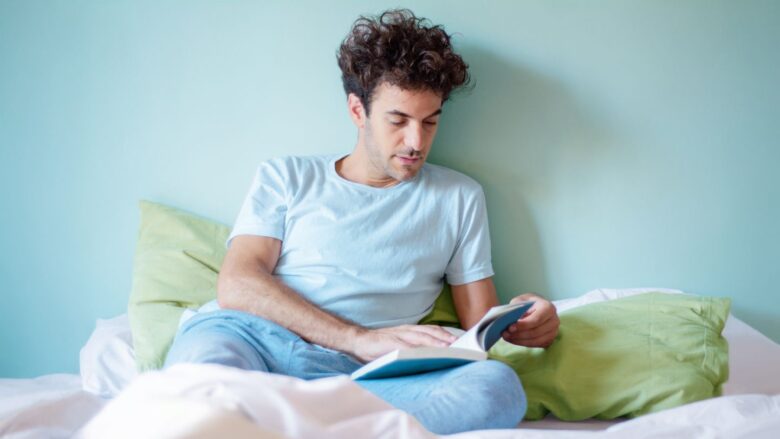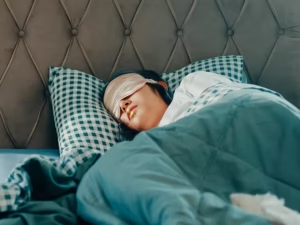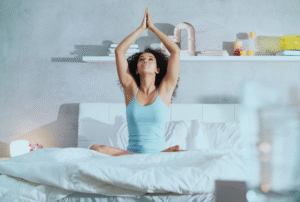Sleep is a fundamental pillar of human health, yet its quality and duration have been increasingly jeopardized by our growing reliance on digital devices. Whether it’s the late-night scroll through Instagram, binging episodes of your favorite series, or replying to emails before bed, screen time has become so embedded in our day-to-day lives that we rarely consider its toll on our health. But the impact is undeniable. Digital screens are more than an inconvenience to sleep; they are a barrier to true rest. Understanding the relationship between our digital habits and sleep can help us make mindful choices to balance our technology use and overall well-being.
The Blue Light Dilemma
One of the main culprits sabotaging sleep is blue light emitted by digital screens. Blue light has a short wavelength that disrupts the natural production of melatonin, a hormone that regulates sleep. Normally, melatonin levels rise in the evening as darkness sets in, signaling to your body that it’s time to wind down. When exposed to blue light at night, the brain becomes tricked into thinking it’s still daytime, impeding melatonin release and delaying your internal clock. Overuse of devices like smartphones, tablets, and TVs can suppress melatonin production by as much as 55%, according to research from Harvard Medical School. While devices are designed to keep us engaged, their unintended consequence is disrupted sleep cycles, leaving us feeling groggy the next day.
Creating a Screen-Free Evening Routine
Breaking the habit of bedtime scrolling requires deliberate action. A screen-free evening routine is one of the easiest ways to reduce the influence of blue light and psychologically prepare for rest. Experts recommend implementing a “digital sunset,” a timeframe where all devices are switched off at least one to two hours before bed. Replacing your nightly screen time with calming practices, such as reading a physical book or meditating, can signal to your body that it’s time to slow down. For those reluctant to completely part ways with their screens, blue-light-blocking glasses and device settings like “night mode” provide temporary relief but should never replace proactive habits.
Mindful Alternatives to Screen Time
The challenge often lies in finding meaningful screen-free activities that satisfy our craving for entertainment or stimulation. Mindful alternatives not only enrich our evenings but also encourage relaxation. For instance, journaling allows you to empty your mind of the day’s stress and helps you cultivate gratitude. Creative hobbies such as sketching, knitting, or playing an instrument can also act as restorative outlets, engaging your mind without overstimulating your senses. Audiobooks or soothing podcasts are another great choice for winding down, as they hold your attention without requiring interaction with a screen.
Optimizing Your Sleep Environment
Even after disconnecting from your devices, ensuring your bedroom supports restful sleep makes a significant difference. A comfortable sleep environment promotes not just falling asleep but staying asleep. Start by minimizing light pollution using blackout curtains or eye masks, and keep your room temperature cool, as studies show a cooler setting between 60-67°F improves sleep quality. The bedroom should also be free of distractions, so designate it solely for sleep (and intimacy). Organize cables, place your phone on “Do Not Disturb,” and eliminate clutter to create a haven of calm. Pay attention to your mattress and pillows as well, ensuring they provide the right support for your frame.
The Importance of Consistency
Consistency is the foundation of effective sleep hygiene. Whether it’s a weekday or weekend, maintaining the same sleep-wake schedule improves your body’s natural circadian rhythm. Irregular patterns can throw your biological clock off balance, leading to poor-quality sleep. Establish routines not just around bedtime but also morning habits. Exposing yourself to natural sunlight in the morning helps reset your internal clock and makes it easier for your body to stick to a predictable rhythm. Consistency in your eating, exercise, and work routines can also mitigate stress, which indirectly enhances sleep.
Addressing Underlying Sleep Issues
If you’ve made substantial changes to your digital habits and sleep routine but still face difficulties in getting adequate rest, it might be time to consider underlying issues. Chronic insomnia, sleep apnea, and restless leg syndrome are just some of the medical conditions that disrupt sleep. Speaking with a healthcare professional or sleep specialist can provide valuable insights and treatment plans. Tracking your sleep patterns with wearable devices or a sleep diary may also reveal trends that help assess the root cause of your sleep struggles. Don’t dismiss persistent sleep challenges as minor inconveniences; addressing them proactively can transform both your nights and your days.
Sleep Quality vs. Screen Time
To illustrate the correlation between screen time and sleep quality, consider the following chart:
| Screen Time Before Bedtime (Hours) | Average Sleep Quality Score (1-10) | |------------------------------------|-------------------------------------| | 0-1 | 8.5 | | 1-2 | 7.2 | | 2-3 | 6.4 | | 3+ | 5.5 |
The data clearly shows that as screen time before bed increases, sleep quality deteriorates. By limiting screen exposure in the crucial hours before sleep, you can significantly improve the restorative power of your rest.
Reconnect with Restful Nights
Prioritizing sleep is one of the most restorative steps you can take for your physical and mental well-being. Disconnecting from screens, creating calming evening routines, and optimizing your sleep environment may seem like small changes, but they yield significant benefits. For a deeper reset, consistency and mindfulness are key. Start by committing to shorter screen-free intervals, and as you feel the difference in your rest and rejuvenation, gradually build sustainable habits.
True rest goes beyond just lying in bed for hours. It’s a process of resetting your mind and body, giving them the care and attention they need to perform at their best. Start today by rethinking your relationship with screens, and reclaim the nights that truly recharge your energy.
FAQ
How does blue light affect the body?
Blue light reduces melatonin levels, delaying sleep and disrupting your natural circadian rhythm.
Do blue light glasses eliminate all exposure?
Blue light glasses reduce but don’t eliminate exposure. It’s best to pair them with reduced screen time before bed.
What’s the ideal bedroom temperature for sleep?
Research suggests a cool environment, ideally between 60-67°F, leads to optimal sleep.
How soon can I see improvements after reducing screen time?
Many people notice better sleep quality in just a few nights after cutting back on screens before bed.
Can naps compensate for poor nighttime sleep?
While naps can provide a short-term energy boost, they cannot replace the restorative functions of consistent night sleep




